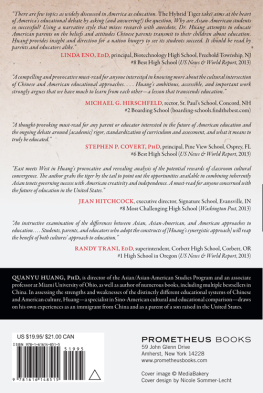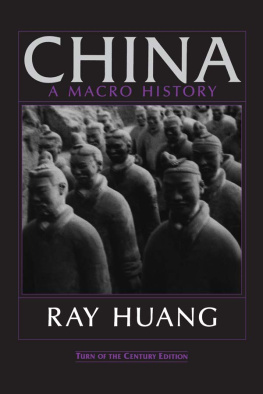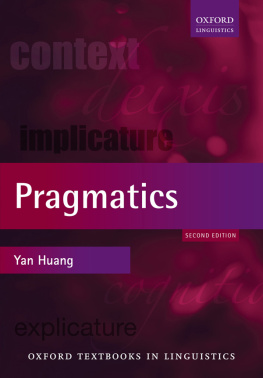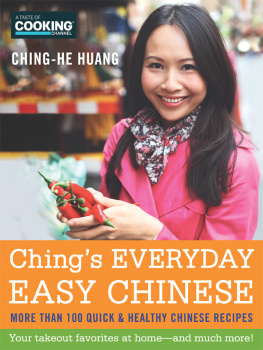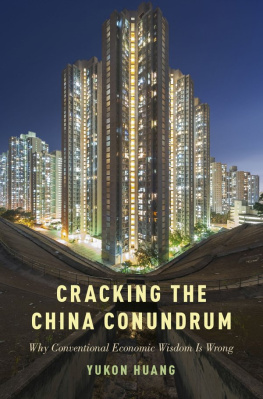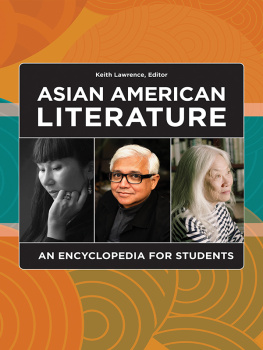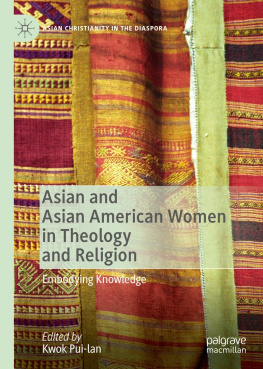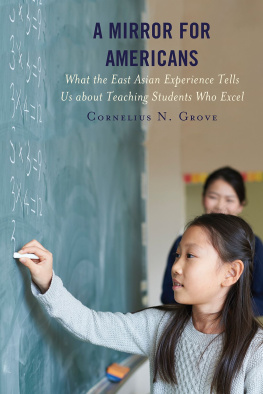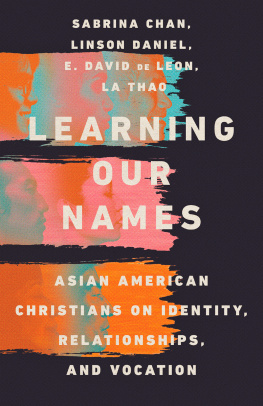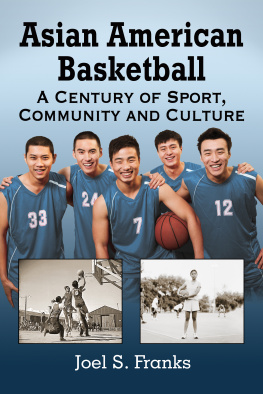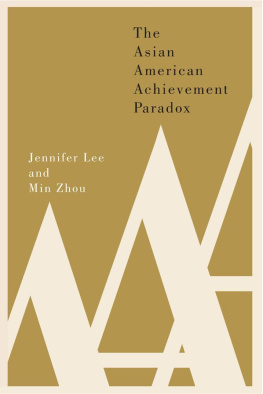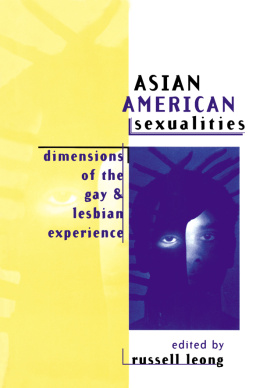
In I mention a sixteen-year-old Olympian stepping out onto a ten-meter diving platform with the weight of the world on her shoulders. While she was the only one on the platform, she did not get there on her own. Countless others worked tirelessly and sacrificed to help her climb onto that platform. Like her, I've been able to get where I am because of the people around me.
One of those people is my father. I came to the United States to pursue a dream that began with him. From the time he first encountered American airmen in China during World War II, my father dreamed of coming to this country. While he himself never had the means or the opportunity, he made sure that I did. That dream was bolstered by my mother, who told me when I was young that engaging in education is to write history. It's taken me more than thirty years to understand what she meantand I'm still today unraveling more of the meaning contained in that single sentence.
This book is a perfect example of how all projects are family projects. From its inception, my wife has helped me in innumerable waysnot just by helping to shape the contents of the book and the underlying theory, but also by raising our son and helping me create the material to fill out its pages. And these acknowledgments would not be complete without thanking my son, who has in many ways inspired this text, bearing witness to the many poignant moments that underpin it and living through this life with my wife and me. This family project also depended on the help of my sisters, who took care of my ill father and mother after I left China, and the selfless support my brother provided when I was a poor doctoral student. Each of these people has helped me get to where I am.
In addition, I would like to acknowledge and thank my editors, Steven L. Mitchell, Brian McMahon, and Swapna Lovin, and my agent, Bridget Wagner Matzie. I'd also like to express my gratitude to all those at Random House and Prometheus Books who have made this book possible, especially Jill Maxick, Meghan Quinn, and Melissa Ra Shofner. And of course, I'd like to thank my students, who have also provided assistance, especially Aaron Gilkison, Rachel Wayne, Kexin Li, and Maria Song.
Finally, I would like to give a very special thank you to Rick Wolff, who has believed in and supported me, and has kindly helped me to make this book a reality.

Oranges growing to the south of the Huai River are oranges, but north of the river, they become zhi. The leaves of both are similar, but their tastes are very different. Why? This must be because the natural environments and climates of the lands to the south and to the north of the Huai River are different.
Quoted from Yan Tzu
TIGERS WITHOUT A TIGER MOM
At the end of the most recent Year of the Tiger, in 2011, a self-stylized so-called Tiger Mom named Amy Chua published a book in America titled Battle Hymn of the Tiger Mother. Featuring heavily (and, perhaps, grotesquely) in this book was what the author purported to be Chinese parenting. The author of Battle Hymn devoted large sections of her memoir to describing her parenting methods and philosophy. But instead of labeling it as her own personal parenting philosophy, a style of parenting that she created, Chua boldly branded it as Chinese parenting.
Her book created quite the firestorm in the US media; her vitriolic parenting style was foreign to American parents. However, what many don't realize is that the way Chua chose to bring up her daughters is alien to most Chinese families as well. Indeed, her harsh, anachronistic methods are out of date and far outside of what is acceptable and encouraged in mainstream society in China today; it should go without saying that it's below the standards of most Chinese-American parents. The Tiger Mom's misinterpretations and mischaracterizations have led Americans astray in understanding the Chinese style of parenting and education. Consequently, this inaccurate portrayal has served only to deepen social biases against Chinese-American parenting and education.
Amy Chua's decision to refer to herself as the Tiger Mother is a confusing choice. I am no zoologist, but I submit that the behavior of a real female tiger mother (the animal) is quite different from Amy Chua's (the human). Just take a look at an actual tiger mom. You've seen her at the zoo or perhaps on TV. Picture her in your mind, a five-hundred-pound Bengal tiger. While tigers are dangerous and feared apex predators, we aren't talking about their hunting methods. We're talking about family education. Don't imagine a tiger stalking her prey. Instead, try to imagine her with her cubs.
How does she act around them? How does she treat them?
Surprisingly, this calls up a vastly different set of traits. As a parent, a real female tiger mother is always unbelievably nice to her kids. Indeed, she's a pushover! Real tigers coddle their children, exhibiting infinite patience and understanding. Real tigers protect their young; they play with them; they lick and clean them gently and diligently. When her cubs jump on her broad head, back, and stomach, she doesn't bite or curse at them. She's patient, allowing her children to play as they see fit. The one thing we can say for sure that a real tiger mother does not do to her young? She does not hurt them.
A real tiger mother saves her fierceness for the outside world, for the dangers lurking out there that would harm her kids. She doesn't turn it upon her own children. Now think about Amy Chua. Would you say she was hurting her children through her strict parenting and ridiculous demands? I believe that most American parents (and Chinese and Chinese-American parents, for that matter) would.
Many years ago, when I was young, there was a woman in the neighborhood that we called a tiger mom. Back then, however, it meant something very different for us. The tiger mom we knew truly deserved her namenot because she forced her children to abide by a very strict set of parenting rules, but, to the contrary, she always aggressively and priggishly protected her spoiled kids whenever they caused any trouble. This tiger mom, like the real tigers in the wild, only bared her teeth at outsiders, while spoiling her own kids rotten.
Oddly, the outwardly hostile, inwardly protective tiger is generally closer to the real essence of Chinese mothers than Amy Chua's version of the Tiger Mother. Take Ms. Chua's infamous list of ten things her children were never allowed to do. Her kids weren't allowed to participate in school plays (or complain about missing them), attend play dates, participate in sleepovers, watch TV, play video games, choose the extracurricular activities they participated in, play any instrument other than the piano or violin (and they weren't allowed to not play one of these instruments), be anything other than the top student in school for all subjects (except gym and drama, because of course those didn't matter). And, of course, A's were not only expected, they were required.
I've put this list in front of many real Chinese and Chinese-American mothers (including my own wife), and the reaction is almost universally the same: incredulity. While many of Ms. Chua's rules are reflective of the traditional Chinese belief that education is supreme (which we will discuss in great detail in later chapters), Amy Chua has adopted an imprecise, self-centered, and highly distorted version of these values.
Next page
